
Chief Stand Watie Surrenders Last CSA Army,
June 23, 1865
 he Cherokee Nation is the largest Native American tribe. They lived for most of their known history in the Western Carolinas, North Georgia, Alabama, and Tennessee. Frontier settlers began encroaching on their lands prior to the War for Independence and accelerated through the early 19th Century. The states which claimed Cherokee territory told the tribes to move out, especially after gold was discovered in North Georgia. Seeking to appease their white neighbors and state officials, many of the tribe learned to speak English, adopted American laws, created their own written language, eventually achieving almost 100% literacy, and accepted Christianity. he Cherokee Nation is the largest Native American tribe. They lived for most of their known history in the Western Carolinas, North Georgia, Alabama, and Tennessee. Frontier settlers began encroaching on their lands prior to the War for Independence and accelerated through the early 19th Century. The states which claimed Cherokee territory told the tribes to move out, especially after gold was discovered in North Georgia. Seeking to appease their white neighbors and state officials, many of the tribe learned to speak English, adopted American laws, created their own written language, eventually achieving almost 100% literacy, and accepted Christianity.
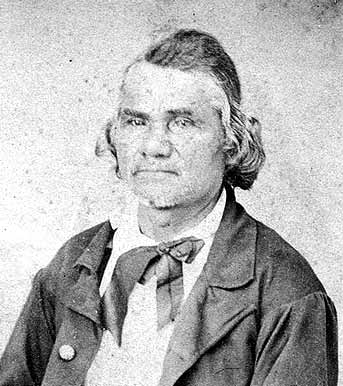
Stand Watie (1806-1871)
|
|
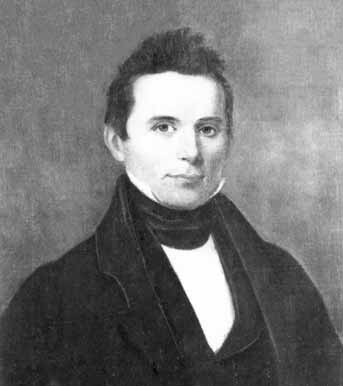
Elias Boudinot, also known as Buck Watie (1802-1839)
|
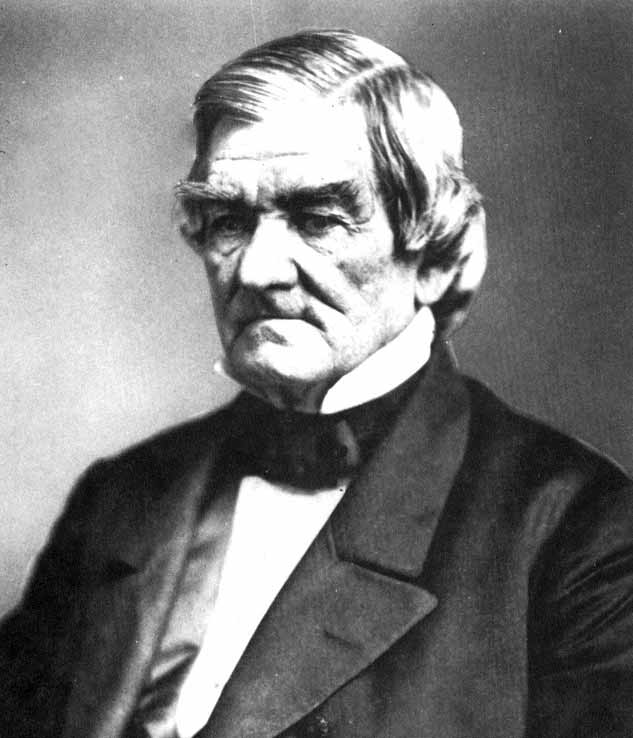
John Ross (1790-1866) was the Principal Chief of the Cherokee Nation
from 1828 to 1866
|
Nonetheless, the President of the United States, Andrew Jackson, insisted on their removal. In 1832 the State of Georgia sent militia forces to forcibly expel the natives and confiscate their land. The promised protection of the government in Washington City was not forthcoming and the states moved against the “savages.” Expecting to be forcibly turned out of their homes everywhere, a group of Cherokee, led by brothers Stand Watie and Elias Boudinot, signed a treaty with the Federal government at the Cherokee capitol, Achota, promising to move westward to the “Indian Territory.” The majority of Cherokee looked to Chief John Ross to oppose the removal and disavow the treaty. Watie and his family joined the Cherokee already in Oklahoma, known as the “old settlers.” In 1838 the Federal government removed the remaining 60,000 natives, including Ross and the 2,000 or so black slaves held by the Cherokee, on a trek that became known as “the trail of tears.” Up to 4,000 died along the trail.
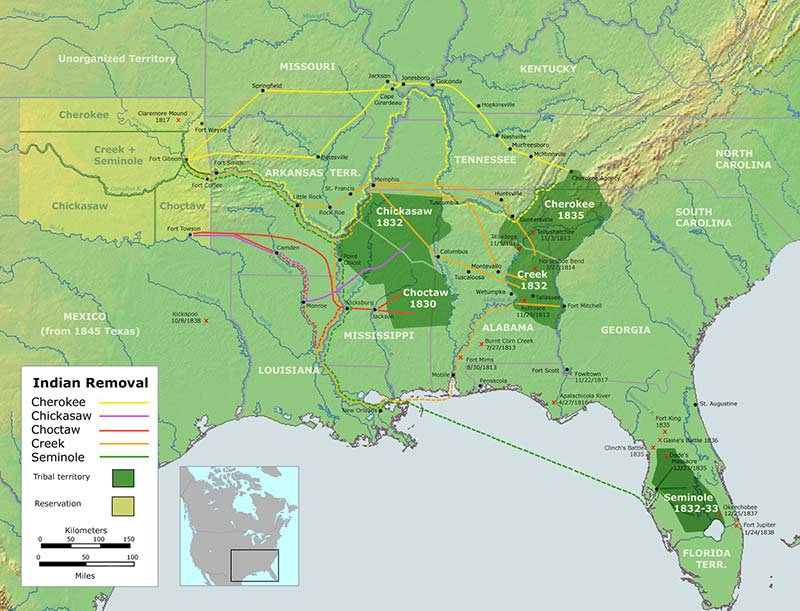
Trails of Tears—depicting the routes taken to relocate Native Americans from the Southeastern United States between 1836 and 1839, and showing the original location of various tribes versus their eventual relocation sites
In the 1840s and 50s, members of the Ross faction occasionally fought the Watie family, murdering his brothers, including Elias Boudinot (who named himself after the great Christian founding father of colonial days) and other family members. Retaliating, Stand Watie killed a Ross relative, no love lost between Cherokee clans.
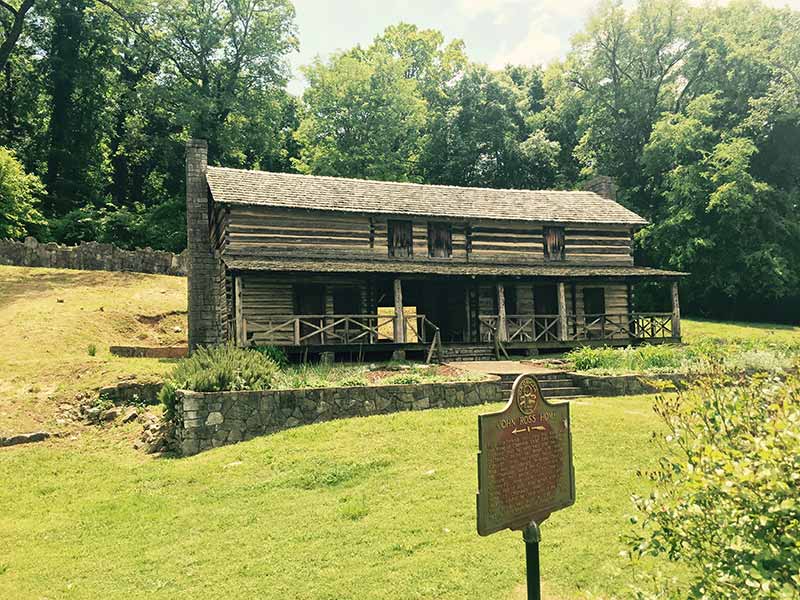
John Ross Home, Rossville, Georgia—built in 1797 by John McDonald, grandfather of John Ross—was Ross’s home until he left on the “Trail of Tears”
In 1861 and the coming of the War Between the States, Principal Chief John Ross sided with the Confederacy at first then changed his mind. He decided the next year that his loyalty to the South was mistaken and he switched sides, visiting President Lincoln, removing the tribal records to Kansas, and taking as many families with him that would go. Stand Watie was elected as principal chief, and many Cherokee followed him to the bitter end. In 1864, Watie was given a Brigadier General’s commission from the Confederate government in Richmond.
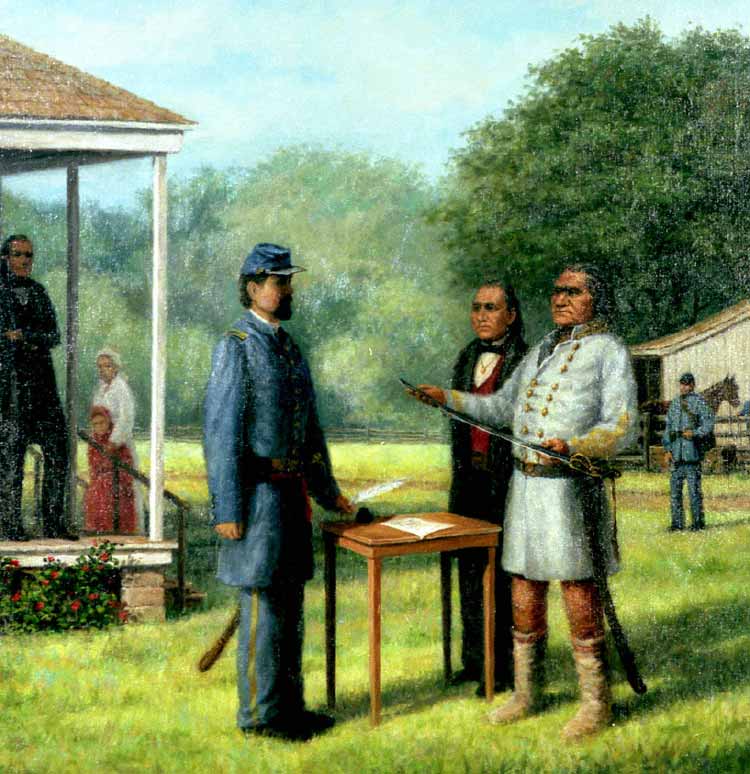
Stand Watie in Confederate uniform
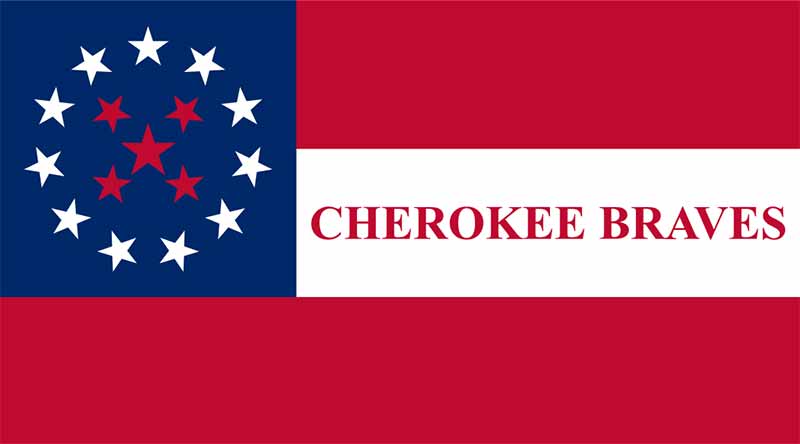
Flag of the 1st Cherokee Mounted Regiment, CSA
|
Operating from Texas and Oklahoma, Watie’s men fought for four long years for Southern independence. The Battle of Pea Ridge, Arkansas, was the largest engagement in which he served, fighting alongside the Texas Rangers of Benjamin McCullough’s Brigade. Throughout the war, Watie led his men against factions of Cherokee, Creeks and Seminoles who sided with the Union—a Civil War within the Civil War. The 1st Cherokee Mounted Rifles flew their own combat flag in battle and gave a very good account of themselves through great hardship and suffering. His “Mounted Rifles” regiments were joined by battalions of Cherokee, Seminole, and Osage infantry. They fought in more battles and skirmishes in the Trans-Mississippi theatre of the war than any other Confederate force against all Yankee comers, white or native, in Kansas, Indian Territory, Arkansas, Missouri and Texas. In 1865, Stand Watie was put in command of all Indian forces west of the Mississippi, but too late to consolidate them into a force sufficient to go on the offensive beyond the Texas border.
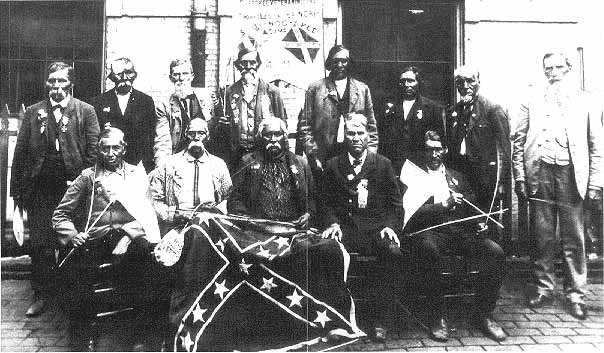
Cherokee Confederates’ reunion in New Orleans, 1903

Cherokee Nation Historic Courthouse in Tahlequah, Oklahoma—built in 1849, it is the oldest public building standing in the state of Oklahoma—with a memorial to the Confederacy in the foreground
|
On April 9, General Lee surrendered Confederate forces in Virginia, and on April 26 General Joseph E. Johnston gave up in North Carolina to General Sherman. Jefferson Davis and a few of the Confederate cabinet quietly moved south through Georgia, hoping to carry on the fight with either General Richard Taylor and his army in Mississippi, or General Watie in Texas. Taylor surrendered May 8. President Davis was captured on May 10. Stand Watie’s Cherokee continued the fighting until they could no longer do so effectively, finally agreeing to sign a cease fire agreement on June 23 at Doaksville, Oklahoma in the Choctaw Nation. General Stand Watie was the last Confederate General in the field to surrender, exhausted but defiant to the end. He returned to Texas after the war and served on the Southern Treaty Commission. Watie moved the surviving members of his family to the Cherokee Territory and died there in 1871, age 65, perhaps satisfied that he had evened the score a little from the Federal tyranny that had overrun his ancestral lands.
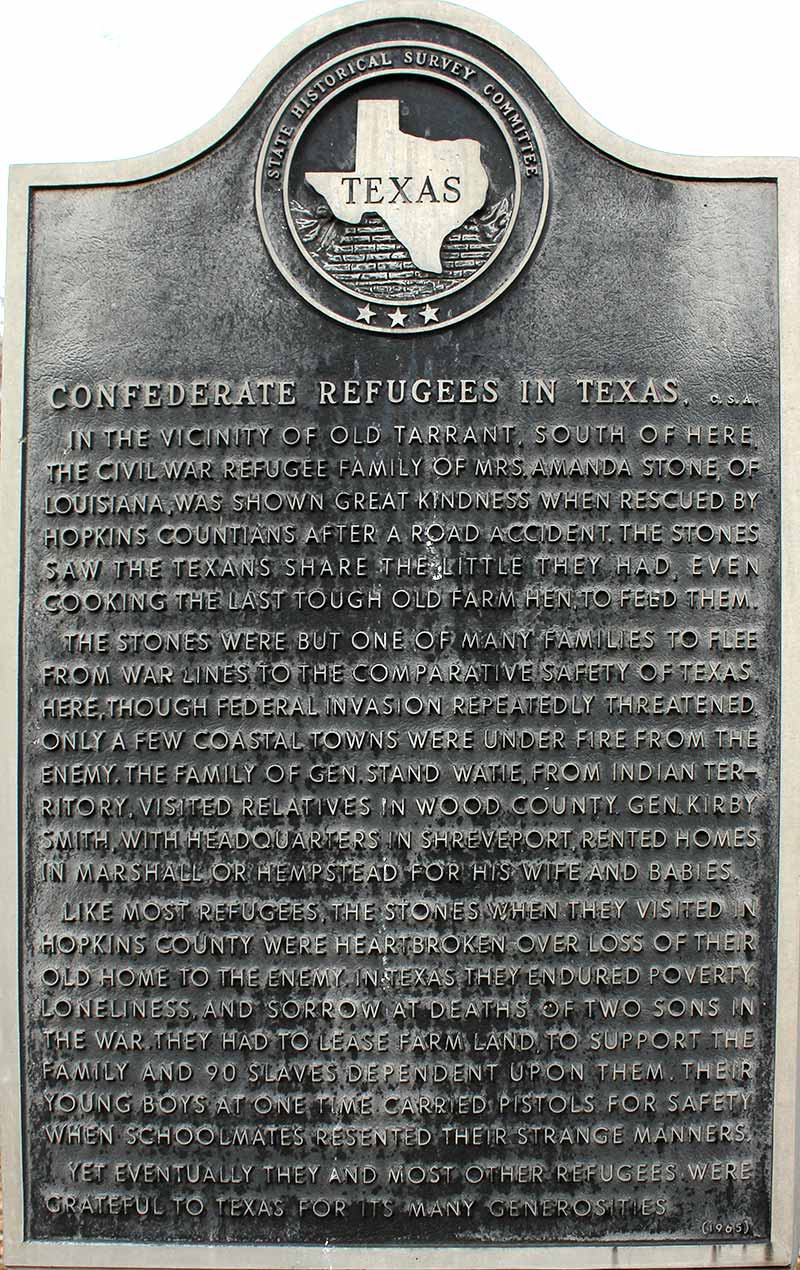
A historic marker in Hopkins County, east Texas near where Stand Watie and his family took refuge at the close of the War

Image Credits:
1 Stand Watie (wikipedia.org)
2 Elias Boudinot (wikipedia.org)
3 John Ross (wikipedia.org)
4 Trail of Tears map (wikipedia.org)
5 John Ross House (wikipedia.org)
6 General Stand Watie (wikipedia.org)
7 1st Cherokee Mounted Regiment flag (wikipedia.org)
8 Confederate Cherokee Reunion (wikipedia.org)
9 Cherokee Courthouse (wikipedia.org)
10 Confederate Refugee Marker (wikipedia.org)
|







